
The Jardin des plantes, also known as the Jardin des plantes de Paris when distinguished from other jardins des plantes in other cities, is the main botanical garden in France. The term Jardin des plantes is the official name in the present day, but it is in fact an elliptical form of Jardin royal des plantes médicinales, which is related to the original purpose of the garden back in the 17th century.
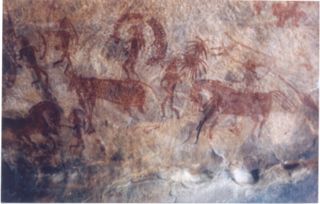
Natural history in the Indian subcontinent has a long heritage with a recorded history going back to the Vedic era. Natural history research in early times included the broad fields of palaeontology, zoology and botany. These studies would today be considered under field of ecology but in former times, such research was undertaken mainly by amateurs, often physicians, civil servants and army officers.

The Museu Paraense Emílio Goeldi, commonly shortened MPEG, is a Brazilian research institution and museum located in the city of Belém, state of Pará, Brazil. It was founded in 1866 by Domingos Soares Ferreira Penna as the Pará Museum of Natural History and Ethnography, and was later named in honor of Swiss naturalist Émil August Goeldi, who reorganized the institution and was its director from 1894 to 1905. It is now the "main research center on natural systems and sociocultural processes of the Brazilian Amazon." The museum and zoological park are listed as protected sites by both the National Institute of Historic and Artistic Heritage, and the Department of Historic, Artistic and Cultural Heritage of the state of Pará.

The Bogor Botanical Gardens is a botanical garden located in Bogor, Indonesia, 60 km south of central Jakarta. It is currently operated by the National Research and Innovation Agency. The garden is located in the city center and adjoin the presidential palace compound of Istana Bogor. It covers an area of 87 hectares and contains 13,983 different kinds of trees and plants of various origin. The geographic position of Bogor means it rains almost daily, even in the dry season. This makes the garden an advantageous location for the cultivation of tropical plants.
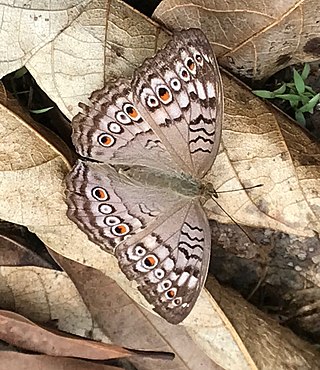
Junonia atlites, the grey pansy, is a species of nymphalid butterfly found in South Asia.

Nepenthes × hookeriana, or Hooker's pitcher-plant, is a common natural hybrid involving N. ampullaria and N. rafflesiana. It was originally described as a species.

The Zoological Survey of India (ZSI), founded on 1 July 1916 by the Ministry of Environment, Forest and Climate Change of the Government of India as a premier Indian organisation in zoological research and studies to promote the survey, exploration and research of the fauna in the country.

The Hungarian Natural History Museum in Budapest, dating back to 1802, houses the largest natural history collections of Hungary and the region.
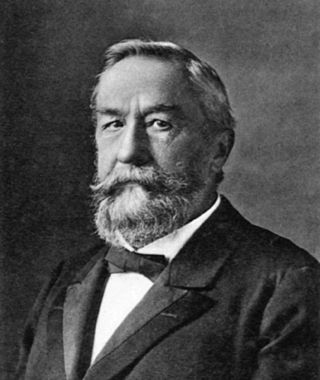
Gustav L. Mayr was an Austrian entomologist and professor in Budapest and Vienna. He specialised in Hymenoptera, being particularly known for his studies of ants.

The Copenhagen Zoological Museum was a separate zoological museum in Copenhagen, Denmark. It is now a part of the Natural History Museum of Denmark, which is affiliated with the University of Copenhagen. The separate museum location closed in 2022, but will reopen in 2025 in new and considerably larger buildings in the northeastern corner of the Copenhagen Botanical Garden. Although the museum will be relocated, the research and storage facilities at its old location have been maintained.

A zoological specimen is an animal or part of an animal preserved for scientific use. Various uses are: to verify the identity of a (species), to allow study, increase public knowledge of zoology. Zoological specimens are extremely diverse. Examples are bird and mammal study skins, mounted specimens, skeletal material, casts, pinned insects, dried material, animals preserved in liquid preservatives, and microscope slides. Natural history museums are repositories of zoological specimens
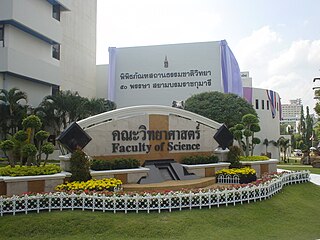
The Princess Maha Chakri Sirindhorn Natural History Museum is a natural history museum in the Prince of Songkla University in southern Thailand. It was originally known as the Natural History Museum of Prince of Songkla University (PSU Museum). After a renovation, it was renamed and re-opened on 14 January 2008 by HRH Princess Maha Chakri Sirindhorn. The museum's main building is located in the most west part of the Faculty of Science. The building contains both exhibition and collection areas.
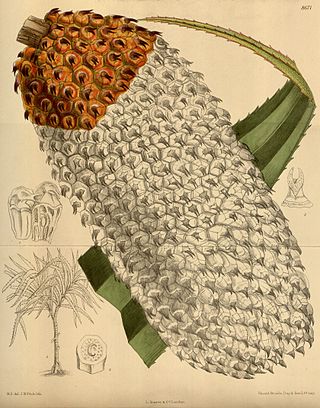
Pandanus furcatus Roxb., also known as korr, pandan or Himalayan/Nepal screw pine, is native to the Sikkim Himalaya of Northeast India, Bhutan and Nepal, Malaysia, Indonesia and West Africa, and occurs on moist and shady slopes of ravines between 300 and 1500 m. As might be expected it is cold-resistant and able to tolerate occasional light frost, slowly growing to a tall branched tree - about 17 m at maturity - and perched on stilt-like aerial roots. The crown is made up of 5 m long, pale-green leaves, with finely toothed margins, while its fruits are sweet-tasting and edible. The leathery flower spathes are golden-yellow, the lowermost are largest and about 1m in length. These give rise to cone-like fruits, 15–25 cm long, that are bright orange to red when mature and consist of 5-6 angled drupes.
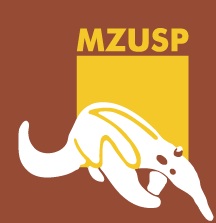
The Museum of Zoology of the University of São Paulo is a public natural history museum located in the historic Ipiranga district of São Paulo, Brazil. The MZUSP is an educational and research institution that is part of the University of São Paulo. The museum began at the end of the 19th century as part of the Museu Paulista; in 1941, it moved into a dedicated building. In 1969 the museum became a part of the University of São Paulo, receiving its current name.

A scientific collection is a collection of items that are preserved, catalogued, and managed for the purpose of scientific study.
Aphaenogaster donisthorpei is an extinct species of ant in formicid subfamily Myrmicinae known from a Late Eocene fossil from North America. A. donisthorpei was one of two Aphaenogaster species described in the 1930 paper.

Djunijanti Peggie is an entomologist who specializes in Lepidoptera of Indonesia. She is a researcher and curator for the Indonesian Institute of Sciences. Peggie is the first Indonesian to become a butterfly researcher and author of books about butterflies. She is considered to be the mother of Indonesian butterfly studies.
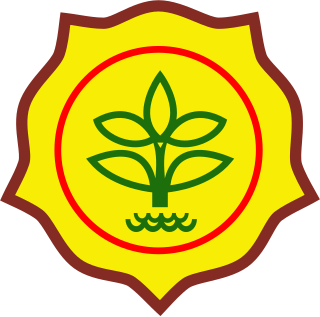
The Indonesian Agency for Agricultural Research and Development(Indonesian: Badan Penelitian dan Pengembangan Pertanian, abbreviated as Balitbangtan) abbreviated in English as IAARD was a supporting unit of the Ministry of Agriculture which is responsible for state research, development, and innovation in the field of agriculture in Indonesia.

The National Institute of Health Research and Development was a supporting unit of the Ministry of Health which is responsible for state research, development, and innovation in the field of health and medical sciences. The agency dissolved and liquidated into National Research and Innovation Agency (BRIN) on 31 December 2021 as part of BRIN state research activity integration plan.
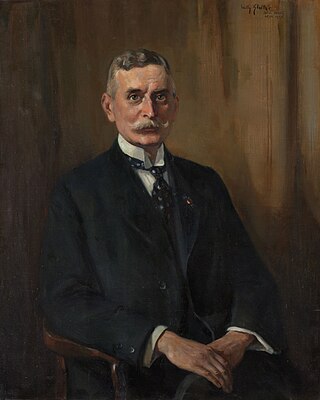
Jacob Christiaan Koningsberger was a Dutch biologist and politician. He spent much of his life in the Dutch East Indies, where he wrote extensively about the flora and fauna of Java. He was extensively involved in the Lands Plantentuin in Buitenzorg, serving as its director between 1910 and 1918. In politics, he served as the first chairman of the Volksraad (1918–1919), as well as Minister of the Colonies under Dirk Jan de Geer (1926–1929). An independent, he had liberal leanings and allowed more indigenous representation in governance.




















